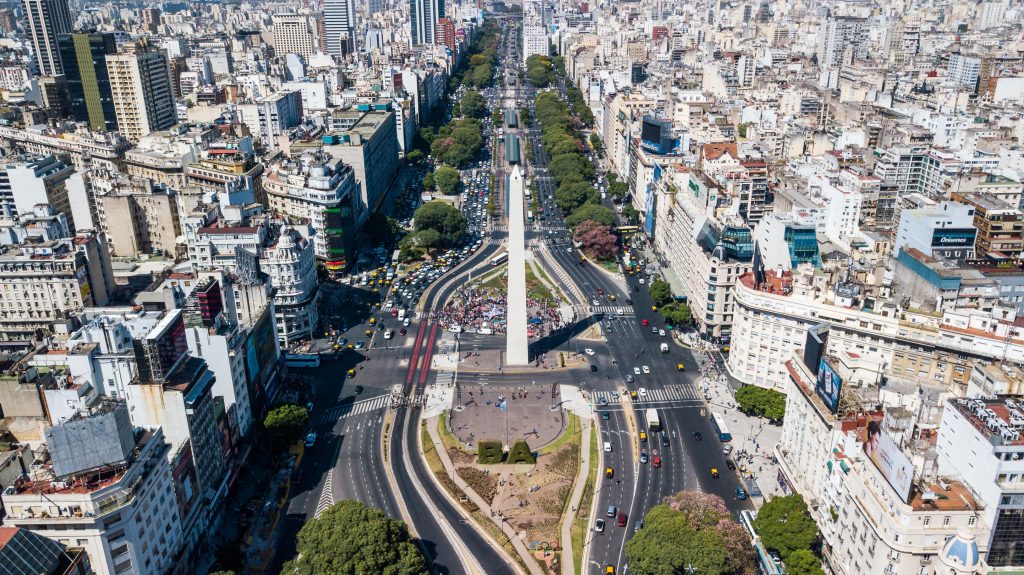RIO DE JANEIRO, BRAZIL – The Foreign Trade Association of Brazil (AEB) reported on Wednesday, July 17th, its revised estimates for the Brazilian trade balance in 2019, updating those made last December.
The surplus, which had been forecast at US$32.7 billion (R$128 billion), rose to US$52.2 billion in the new projection, which is still 10.9 percent below the 2018 figure (US$58.6 billion).

Projections for exports rose from US$209.1 billion to US$223.7 billion, a drop of 6.7 percent compared to the US$239.8 billion previously estimated. Concerning imports, projections retreated from US$186.3 billion to US$171.5 billion, a decline of 5.4 percent compared to the 2018 result.
The president of AEB, Jos Augusto de Castro, noted that the trade projected at US$ 395.266 billion for this year would be below the US$421.114 billion recorded last year, and far from the record of US$482.292 billion in 2011. “What generates the economic activity is not the surplus, but the business chain that, when in decline, leads economic activity to fall.”
According to the association, some “surprises” contributed to the downward revision of the trade balance. Among them, the collapse of the Vale dam in Brumadinho (MG); the trade war between China and the United States; the recession in Argentina, which accelerated this year; the Brazilian Gross Domestic Product (GDP), which was initially forecast at 2.5 percent and has fallen to below 0.8 percent; and slower growth in China, which will be lower than in previous years.
“This combination contributed to the fluctuations of commodities (mineral and agricultural products traded abroad). In the case of Brazil, it went lower rather than higher,” Castro said. He recalled that swine fever in China impacted the export of Brazilian meat and soybeans.
According to Castro, Brazilian exports are still focused on commodities and not on manufactured goods, with a higher added value. The forecast is to export around US$ 79 billion in manufactured goods, less than in 2007. “It’s too low. Unfortunately, it’s weak,” he said.
Reforms
The approval of the social welfare and tax reforms is essential, but its effect will only be felt later, Castro said. “It builds expectation for the future, but it’s hard for it to have an impact in 2019.”

In his opinion, the Special Regime for the Reintegration of Tax Values for Exporting Companies (Reintegra) would have an immediate impact. “It’s the only measure that can reduce red tape.”
Set up by the federal government in 2014, Reintegra ensures tax credit corresponding to up to three percent of export revenue for producing companies that export goods and that have cumulatively been industrialized in Brazil. Due to decrees signed in 2015 and 2018, this credit fell from three percent to two percent and from two percent to 0.1 percent, which is under criticism from the export sector.
Brazil also needs better infrastructure, “but it will take time to build,” added Castro.
Argentina
The president of AEB said that 98 percent of total exports to China are commodities and that Brazil does not export manufactured goods to the Chinese because it cannot offer competitive prices. The Brazilian manufacturing market is concentrated in South America, where our primary importer is Argentina, which is in recession. “We have no alternative markets.”
According to Castro, the North American and European markets are based on intercompany transactions between headquarters and its branches. Argentina is required to generate a trade surplus and, as it does not increase exports, it poses obstacles to imports. One of these obstacles is the statistical fee, which cost US$50 per operation and now can reach up to US$120,000. “It’s clearly a tariff barrier.”
As a result, Brazil could face a trade deficit with Argentina this year, which has not happened since 2003, he said.
Brazilian exports to the Argentinian market fell from US$17.6 billion in 2017 to US$14.9 billion last year, and are expected to shrink further in 2019 to US$10.2 billion, a nearly 70 percent drop in two or three years.

